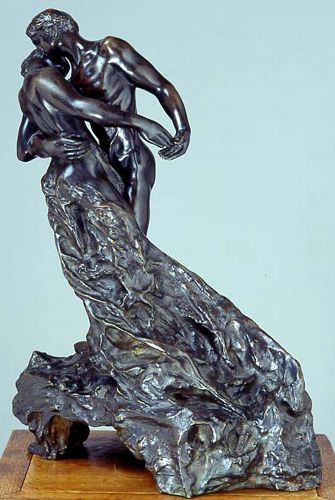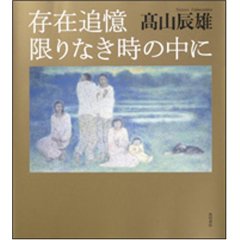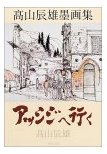2007/12/27 傍晚-晚上很忙,在我的小世界中。當時完全不知道巴基斯坦前總理貝﹒布托(Benazir Bhutto) 在傍晚遭遇明顯的自殺式爆炸襲擊,不幸6:16去世。
2007/12/28 早上8點看bbc評論節目才知道她已過世。然而看cnn 月前的影像,都顯示她是位相當胖的女人。
這首次意識到這國家,是我在英國(1977)的Essex 大學之Tawney Tower 某層樓有該國公民,讓我見識用手抓飯的功夫。可是我這30年來還只是霧裡看花。
Obituary
Benazir Bhutto, 54, Weathered Political Storm

Douglas E. Curran/Agence France-Presse - Getty Images
Benazir Bhutto in front of a poster of her father, Zulfikar Ali Bhutto, after she won first parliamentary elections in 1988.
More Photos >
Published: December 28, 2007
Benazir Bhutto, who was assassinated at age 54 on Thursday in the Pakistani city of Rawalpindi, spent three decades navigating the turbulent and often violent world of Pakistani politics, becoming in 1988 the first woman to be democratically elected to lead a modern Muslim country.
A deeply polarizing figure, the self-styled “daughter of Pakistan” was twice elected prime minister and twice expelled from office amid a swirl of corruption charges that ultimately propelled her into self-imposed exile in London, New York and Dubai for much of the past decade. She returned home only two months ago, defying threats to her life as she embarked on a bid for election to a third term in office, billing herself as a bulwark against Islamic extremism and a tribune of democracy.
The combined bombing and shooting attack that killed her as she left a political rally, standing through the open roof of her car to greet milling crowds of supporters, came as Ms. Bhutto staged a series of mass meetings across Pakistan. She did that despite her aides’ appeals for caution in the wake of a double suicide bombing that narrowly failed to kill her on the night of her return from exile in October. That attack, which killed more than 130 people, came as she drove from the airport in Karachi to her home on the city’s seafront, and provoked a characteristic response.
“We will continue to meet the public,” she said as she visited survivors of the bombings at a Karachi hospital. “We will not be deterred.”
When asked to explain the courage — or stubbornness, as some of her critics saw it — that she displayed at critical junctures in her political career, Ms. Bhutto often referred to the example she said had been set by her father, Zulfikar Ali Bhutto. He was a charismatic and often demagogic politician who was president and prime minister from 1971 to 1977, before being hanged in April 1979 on charges of having ordered the murder of a minor political opponent.
Mr. Bhutto was the founder in 1967 of the Pakistan Peoples Party, the political vehicle that he, and later his daughter, rode to power. Like his daughter, Mr. Bhutto battled for years with Pakistan’s powerful generals. He was ousted from office, and ultimately executed, on the orders of Gen. Mohammad Zia ul-Haq, one of the long succession of military rulers who have dominated Pakistan for nearly 40 of the 60 years since it emerged as an independent state from the partition of British India.
Under house arrest at the time, Ms. Bhutto was allowed to visit her father before his execution at Rawalpindi’s central prison, only a short distance from the site of the rally where she was killed nearly three decades later. In a BBC interview in the 1990s, she said seeing her father preparing to die steeled her for her own political career, which some biographers have suggested was driven, in part, by a determination to avenge him by outmaneuvering the generals.
A History of Violence
Violence ran like a thread through her family life, to an extent that caused her admirers to compare the Bhuttos, in the contribution they made to Pakistan’s political life, and in the price they paid for it, to the Kennedys — and her enemies, pointing to the Bhuttos’ bitter family feuds, to compare them to the Borgias. The younger of Ms. Bhutto’s two brothers, Shahnawaz, died mysteriously of poisoning in 1995, in an apartment owned by the Bhuttos in Cannes, France. French investigators said they suspected that a family feud over a multimillion-dollar inheritance from Zulfikar Bhutto was involved, but no charges were filed.
Ms. Bhutto’s other brother, Murtaza, who along with Shahnawaz founded a terrorist group that sought to topple General Zia, spent years in exile in Syria beginning in the 1980s. When Murtaza finally returned to Pakistan, in 1994, he quickly fell into a bitter dispute with Ms. Bhutto over the family’s political legacy — and, he told a reporter at the time, over the money he said his father had placed in a Swiss bank when he was prime minister. In 1996, Murtaza was gunned down outside his home in Karachi, and his widow, Ghinva, blamed
Asif Ali Zardari, Ms. Bhutto’s husband. Ms. Bhutto’s Iranian-born mother, Nusrat, sided in the dispute with Murtaza, and was dismissed by Ms. Bhutto as the Peoples Party chairman. “I had no idea I had nourished a viper in my breast,” she said of her daughter at the time.
Born on June 21, 1953, Ms. Bhutto, the first child in her family, reveled in telling friends that she was her father’s favorite. One of her most cherished anecdotes about her childhood involved her father’s encouraging her to set aside traditional Muslim views of a woman’s role and to have ambitions beyond the home, a message she said he conveyed with stories about Joan of Arc and
Indira Gandhi.
After attending a private Christian-run school in Karachi, where the family maintained a luxurious mansion, Ms. Bhutto studied at Radcliffe College, earning a Harvard B.A. in 1973, and later at Oxford, where she gained a second B.A. in 1976. At Oxford, she was the first woman to become president of the Oxford Union, the prestigious debating society that nurtured several British prime ministers.
In her memoir, she described what life as a young woman at Harvard felt like. “I was amongst a sea of women who felt as unimpeded by their gender as I did,” she wrote. At Oxford, she adopted a Westernized way of life, spending winters at the Swiss ski resort of Gstaad. She said later that her passions at the time included reading royal biographies and “slushy” romances, and browsing at the London department store Harrods — a habit she maintained throughout the rest of her life.
From Oxford, Ms. Bhutto was thrust abruptly into the heart of Pakistani politics by General Zia’s arrest of her father in 1977, and by his execution 18 months later. Ms. Bhutto wrote in her memoir of her last meeting with her father, through a metal grille at the Rawalpindi Prison. “But I did not cry. Daddy told me not to,” she recalled.
From that moment on, Ms. Bhutto said in later years, she resolved to oust General Zia from power. But in August 1988, the general and the American ambassador, Arnold L. Raphel, were killed when their military plane exploded and crashed in southern Pakistan. Three months later, when she was 35, Ms. Bhutto won a general election and formed her first government, only to be ousted by Pakistan’s president in 1990, having served less than half her term. In 1993, she won a second election, but was again dismissed in 1996.
Her accomplishments in office were few. She claimed in later years that she had clamped down on Islamic militants, established a strong basis for democracy by paring away many of the restrictions on civil liberties imposed by the generals, and provided a boost to the economy, especially in her second term, by attracting a flow of foreign investment. But on both occasions, she was dismissed, under pressure from the military on charges of corruption and incompetent governance. Her ouster, on both occasions, sparked only sporadic protests across Pakistan.
Complexity and Contradictions
A woman of complex and often contradictory instincts, Ms. Bhutto was a politician who presented herself on public platforms as the standard-bearer for Pakistan’s impoverished masses, for civil liberties and for an unfettered democracy. But she made enemies with her imperious and impulsive manner as prime minister in dealing with government officials, diplomats and reporters, and by what her critics described as an instinct for political vindictiveness. She recalled how her father taught her the importance of deceit in politics, lessons she said she had rejected in favor of openness. But American officials were troubled by her account of her role in Pakistan’s secret nuclear weapons program. She maintained in recent years that the Pakistani military had kept her in the dark about the weapons program, and that the first she knew of it was in a CIA briefing in Washington in 1989.
In an interview two years ago for a documentary produced by The New York Times and the Canadian Broadcasting Company, she said she also did not know, when in office, that A. Q. Khan, the head of the Pakistani nuclear program, was selling nuclear technology to other states, including Libya and North Korea. But according to accounts given by Dr. Khan’s associates, Ms. Bhutto, after visits to North Korea in the 1990s, returned to Islamabad with North Korean missile designs intended to be mated to the Pakistani bomb.
In “Daughter of Destiny,” her 1989 memoir, she rebuked reporters for calling attention to her dress, almost always the traditional loose-fitting robe favored by Pakistani women, saying she did not care about matters like dress. But among her aides and Pakistani diplomats, who often accompanied her on shopping trips abroad, she gained a reputation for buying expensive jewelry and shoes and at elite stores in Beverly Hills, London and Paris.
Her critics often attributed her flushes of haughtiness and her expensive tastes to a sense of entitlement, as Zulfikar Bhutto’s daughter and as the pre-eminent member of a wealthy land-owning family from the cotton-growing southern province of Sindh. The egalitarian credo Ms. Bhutto preached as a politician found little echo in the lives of the impoverished men and women, many of them indentured workers, who worked the family’s ancestral lands.
After her second dismissal from office in 1996, a friend said Ms. Bhutto’s sense of herself as inseparable from the fate of Pakistan contributed to actions that led Pakistani investigators to accuse her and Mr. Zardari of embezzling as much $1.5 billion from government accounts.
British and American private investigators working for the government of her political rival
Nawaz Sharif, produced a thick volume of documents tracing what they said were multimillion-dollar kickbacks paid to the couple in return for the award of government contracts, and a web of bank accounts across the world that were used to hide the money. Ms. Bhutto and Mr. Zardari vehemently rejected the allegations, saying their accusers wanted to drive her from power.
Criminal probes of the couple’s financial dealings were opened in Britain, Spain and Switzerland, among other places. But the cases against the couple in Pakistan languished for years in the courts, and the cases against Ms. Bhutto were ultimately quashed by an amnesty granted by Pakistan’s president,
Pervez Musharraf, as part of an American-brokered deal that cleared the way for Ms. Bhutto to return to Pakistan in the fall to participate in elections that Mr. Musharraf set for January.
The American bid to restore her to power in Islamabad reflected her tireless efforts to maintain a network of the powerful among the political media elite in Washington and in London.
Among her friends, Ms. Bhutto’s marriage to Mr. Zardari, who was in Dubai when she was killed, was seen as central to understanding much that went awry in her life in the years after her father was hanged. The marriage in 1987 was an arranged one, in the Muslim tradition; her mother acted as marriage broker. Mr. Zardari came from a modest business family that owned a cinema.
Ms. Bhutto herself spoke soberly of what an arranged marriage entailed, saying that her five years under house arrest — and, briefly, in prison — under General Zia, had left her with little opportunity for courtship. But friends watched with fascination as her relationship with Mr. Zardari developed. Handsome, with a macho style that Ms. Bhutto told friends she thought at first was ridiculous, he became an important figure in her two governments, serving in her cabinet in her second term in a role that gave him a major role in approving foreign investment.
Mr. Zardari’s nickname among Pakistanis, Mr. 10 Percent, spoke for the widespread sense that he had led Ms. Bhutto into the financial irregularities that played an important role in her decision to go into exile. Mr. Zardari, arrested before she left, spent eight years in jail but never faced trial and was freed by Mr. Musharraf and eventually allowed to leave Pakistan. Ms. Bhutto never wavered in defense of her husband. “Time will tell he is the Mandela of Pakistan,” she said. The couple had two sons, Bilawal and Bakhtwar, and a daughter, Aseefa. Bilawal, 19, began studies in the fall at Oxford. The two younger children remained with their father in Dubai.
Reporting was contributed by David E. Sanger, Jane Perlez, David Rohde and Helene Cooper.

















